Klaytn Review: Kakao's Answer To Diem
It’s not uncommon to see cryptocurrency tokens suddenly gain popularity and shoot up in price and in rankings based on total market capitalization. One of the latest to do so is a South Korean project from the internet company Kakao. The project is called Klaytn and it’s a fairly well established blockchain project, with a main net that went live back in June 2019.
The sudden move higher for the token seemingly comes as a reaction to news of an integration with OpenSea, the largest NFT marketplace. This will give Klaytn access to release its own NFTs with ease of access for its user base and those looking for unique new NFTs. In response to the integration the CEO of GroundX, which heads the development of Klaytn, had this to say:
The Klaytn support on OpenSea will provide our ecosystem with an opportunity to interact with a much wider audience, and we look forward to further exploring interesting digital assets on Klaytn.
GroundX is the blockchain subsidiary of South Korea’s internet giant Kakao. GroundX has been tasked with a mission of creating a product that will spark the mass adoption of blockchain by South Korea’s population. It is doing this through the creation of Klaytn, and all the development of the blockchain platform is the responsibility of GroundX.
The team at GroundX is committed to making blockchain accessible to all, with a focus on ease of use, speed, and mass adoption. Ground X also focuses on leveraging blockchain to drive social impact and creating a stable blockchain ecosystem.
Klaytn Overview
The Klaytn main net, which is named Cypress, was launched on June 27, 2019 and at the time it was already ahead of many of its peers. The Klaytn blockchain boasts the following specifications:
- 1-second block generation and confirmation time.
- 4,000 transactions per second.
- Low gas price that is significantly less than Ethereum.
- Runs EVM (Ethereum Virtual Machine) and supports the execution of Solidity contracts.
- 30 reputable corporations worldwide form the Klaytn Governance Council to operate consensus nodes
- 50 initial
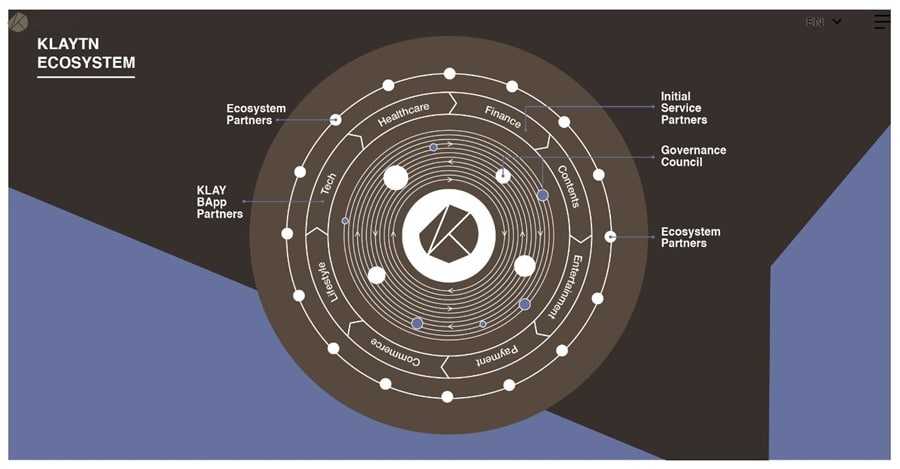
Klaytn has set itself the mission of triggering mass adoption of blockchain technology by millions of global users. Klaytn’s service-centric blockchain solution combines all the best features to be found in both public and private blockchains. This includes decentralized data, distributed governance, low latency, and high scalability. Klaytn is able to do this through its hybrid design.
Unlike many independently developed blockchain projects Klaytn has its roots in the corporate realm, and as such it also counts many major corporations as partners in the project. This is helping to speed development and too create a reliable enterprise-grade platform that will have utility both for corporations and individuals.
Consensus Mechanism in Klaytn
As you might have already seen above, Klaytn wants to provide a platform that is both service-centric and enterprise ready. This requires the platform to solve the problem of finality in blockchains and to create a network that allows for the participation of a large number of nodes. Klaytn is making this possible by using a version of Istanbul BFT that has been optimized to deal with the blockchain network’s characteristics.
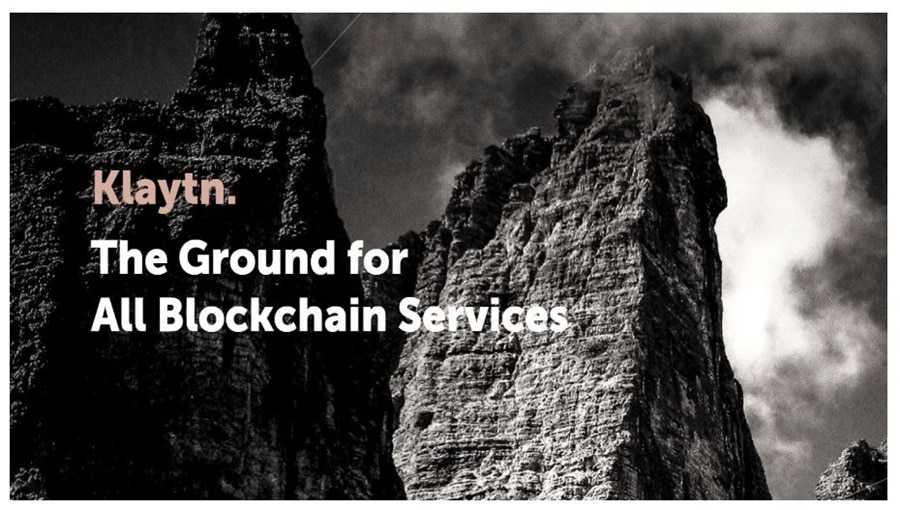
Proof of Contribution
The token economy of Klaytn is dependent on the spontaneous engagement in economic activities and the exchange of value within the ecosystem. Consistent behavior like this creates an economy that drives the growth of the entire ecosystem over time. Klaytn is incentivizing network participants through a compensation mechanism called Proof of Contribution (PoC).
The Proof of Contribution consensus mechanism was designed to compensate any participant in the Klaytn economy who makes a meaningful contribution. In the current state PoC in Klaytn is primarily focused on the service providers and the end-users.
The Klaytn Ecosystem
The Klaytn network was designed to be partitioned into three sub-networks based on the purposes and roles of each. These three sub-networks are the Core Cell Network, the Endpoint Node Network, and the Service Chain Network. Below you can see the high level view of the entire Klaytn ecosystem:
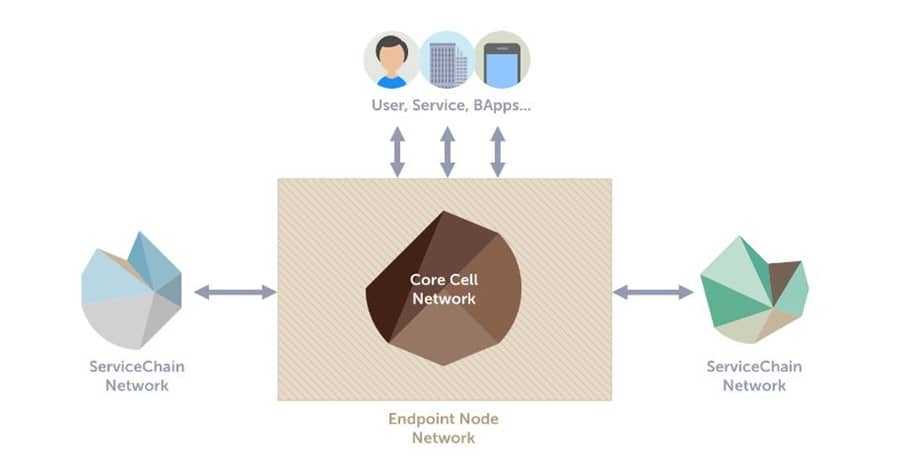
Core Cell Network (CCN)
The Core Cell Network is comprised of Core Cells to verify and execute the transactions submitted via the Endpoint Nodes. The CCN has the responsibility for the creation and propagation of blocks throughout the entire network.
Endpoint Node Network (ENN)
The Endpoint Node Network is built from Endpoint Nodes that are responsible for the creation of transactions, processing data requests from service chains, and handling all the RPC API requests.
Service Chain Network (SCN)
Service Chain Networks in Klaytn are similar to sidechains in that they are composed of auxiliary blockchains attached to the main chain via Endpoint Nodes. These Service Chain Networks exist to allow for the operation of blockchain applications or BApps (otherwise known elsewhere as dApps).
The Core Cell Network and Endpoint Node Network together form the Klaytn main chain. It is possible for blockchain applications to run on the main chain. Alternatively any bApp can be created on its own Service Chain. The benefit of Service Chains for bApps is that they provide a dedicated execution environment for applications that guarantees high TPS and configurable network policies.
Klaytn Network Topology
Through its use of the modified Istanbul BFT Klaytn is able to achieve fast finality of transactions. Because both consensus and validation are done on each block there’s no fork and block finality can be instantly guaranteed once consensus is made.
As communication volume increases it has been known as a problem for the BFT algorithm, however Klaytn has solved this issue by using a randomly selected committee. The consensus nodes form a council and as each block is generated some of these council members are chosen randomly to form a committee.
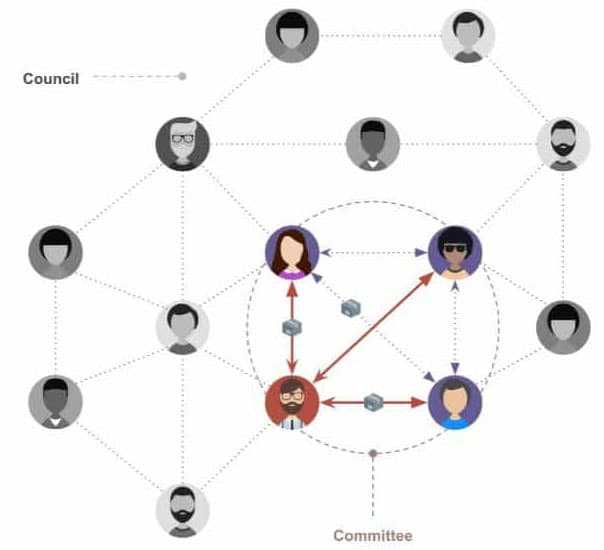
Since all the consensus messages are only exchanged between committee members the communication volume is able to be limited, even as the number of consensus nodes increases.
The Klaytn main net Cypress is capable of providing throughput of 4,000 transactions per second, with blocks being generated every 1 second. It is possible to include as many as 50 consensus nodes in the network and that number will increase as the Klaytn development team works to optimize the algorithm.
Tiered Networks
Klaytn depends on three tiered networks to function. These are the Consensus Node Network, the Proxy Node Network, and the Endpoint Node Network. As you might imagine, these networks are comprised of Consensus Nodes, Proxy Nodes, and Endpoint Nodes respectively.
As you can see below, in the overall architecture of the Klaytn main net the Core Cell Network is broken down into the Consensus Node Network and Proxy Node Network as previously explained. Surrounding and directly connected to the Proxy Node Network is the Endpoint Node Network.
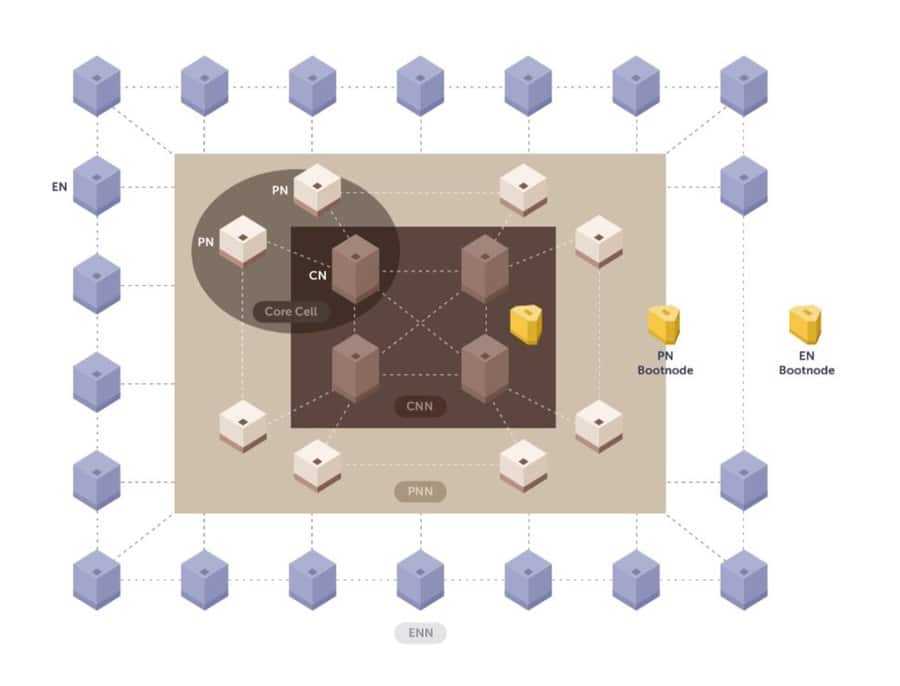
Consensus Node Network (CNN)
The Consensus Nodes combine to form a full-mesh network called the Consensus Node Network. This network applies the modified Istanbul BFT and each Consensus Node itself is required to conform to stringent network resource and hardware requirements to ensure that consensus is being carried out at a sufficient performance level.
Proxy Node Network (PNN)
No surprise that the Proxy Node Network is comprised of Proxy Nodes. These nodes will maintain a connection with just one other Proxy Node is a neighboring core cell. Depending on how the network is configured the number of these peer connections is liable to change.
Endpoint Node Network (ENN)
The Endpoint Node Network is the outermost sub-network, and it is comprised of End Nodes which are connected to each other and to some of the Proxy Nodes.
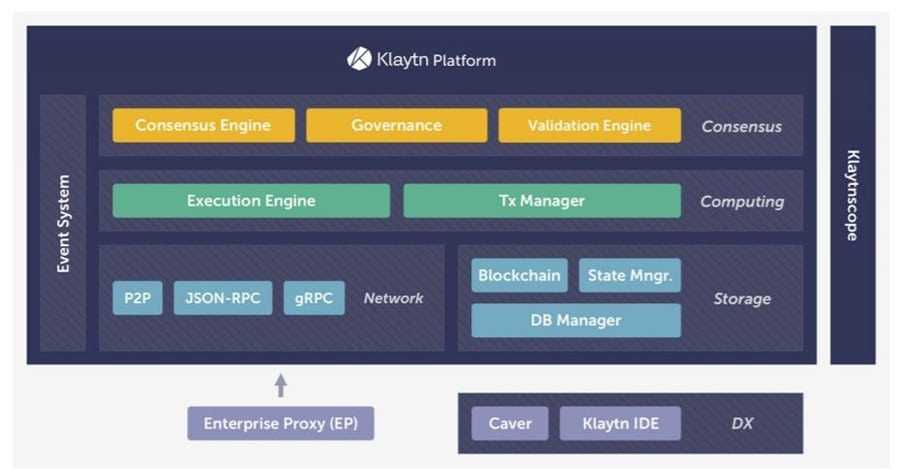
Block Generation
In addition to the consensus algorithm used, the design of block propagation and generation plays a crucial role in reducing blockchain latency.
Block Generation Cycle
Each block generation cycle in Klaytn is known as a “round”. With each round a new block is generated, and at the conclusion of each round a new round begins immediately. Each round in Klaytn is meant to be one second long, however network traffic and node operation conditions can have an impact on the block generation interval.
Proposer and Committee Selection
Each round includes a random, deterministic selection of one Consensus Node to be the proposer for the creation of the block in that round. It then goes on to select a group of Consensus Nodes to be the committee for the round as referenced above. Klaytn has no direct involvement in the selection of either proposer or committee.
Each is chosen using a random number which is generated from the latest block header to run a cryptographic operation that yields proof the Consensus Node has or has not been selected for the round in question. Additionally, the committee size should be Byzantine resistant; if the size of the Consensus Node Network is small, all Consensus Nodes (except the proposer) are eligible to be selected as committee members.
Block Proposal and Validation
Once the selection process is finished the node selected as the Proposer broadcasts its proof of selection for the round to all the Consensus Nodes. Afterwards, the Consensus Nodes selected as the committee for the round will respond to the proposer with their proofs of selection.
This lets the Proposer know which nodes to broadcast the proposed new block to. The Proposer selects a suitable number of transactions from the transaction pool and orders them to create a block. Finally, the Proposer will execute consensus with the committee and together they agree upon and finalize the new block.
Block Propagation
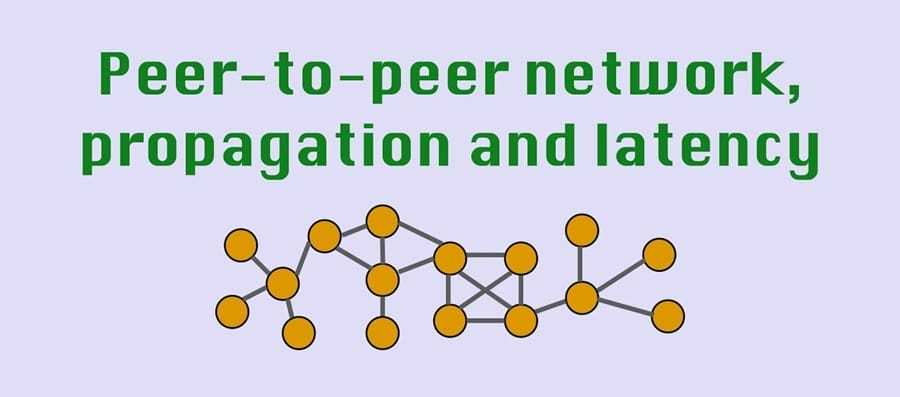
In order to be finalized successfully a proposed block must receive signatures from over two-thirds of the committee members. Once consensus is reached by the committee the newly forged block is propagated to all the Consensus Nodes, the round ends, and a new round begins. Once the block information has propagated to all the Consensus Nodes it becomes available to all the Klaytn network participants too through the delivery of the block header and body information to the End Node Network via the Proxy Node Network.
Public Disclosure and Open Validation
Block generation results can always be confirmed by both end-users and service providers on the Klaytn network. This can be done to ensure that blocks are being generated according to the proper procedures. The validation methods can include checking the block header to confirm it contains a minimum of two-thirds of the committee signatures.
All of the Consensus Nodes operating in the Consensus Node Network are required to maintain transparency by supporting open validation. They are also required to post their public keys in a space that is publicly accessible. In addition to promoting transparency this also prevents malicious behavior by nodes and is a good deterrent to censorship.
Multichannel Propagation
The latency experienced in a network is heavily influenced by how congested the network has become. If we assume that the throughput of a network remains consistent, then an increase in transactions on the network will cause a proportional delay in network latency.
As many of you may have already noticed latency delay is a critical issue for dApps, or in the case of Klaytn for bApps. The typical mobile and web user in 2021 has little patience and will not tolerate an app that has a response time slower than a couple seconds. There’s no reason to believe they would accept greater latency from blockchain based services and apps.

To deal with network congestion Klaytn has adopted a multichannel approach. By assigning separate propagation channels for transactions and blocks, Klaytn network is able to propagate newly created blocks in a timely manner even when the network faces heavy congestion with high number of transactions. This design ensures that BApps on the Klaytn network remain responsive to end-user requests regardless of intermittent network traffic spikes.
The Klaytn Team
Ground X is the blockchain subsidiary of Korea’s largest mobile platform, Kakao, with over 50 million monthly users. By developing a scalable blockchain platform with tangible and practical blockchain services, Ground X aspires to achieve mass adoption of blockchain-empowered services as to substantiate the value and utility of blockchain technology. The primary leadership of GroundX and Klaytn development are:
Jaesun Han – Jaesun is the CEO of GroundX. A serial entrepreneur and blockchain enthusiast, he received his Ph.D in EECSfromt KAIST in 2005. His research topics were P2P algorithms like DHT and distributed systems. In 2007, he founded NexR, the first big data and cloud computing tech startup in Korea, which was acquired by KT (Korea Telecom) 4 years later.
After that, he co-founded FuturePlay and took the role of CTO. FuturePlay is a tech-centric accelerator and investor, focusing on tech startups in APAC. He has invested in dozens of startups and given them technical mentoring. He also taught an innovative business model and IT trends course in KAIST MBA as an adjunct professor from 2007 through 2014.
Myeongjin Jeong - Myeongjin is the CFO at GroundX. He manages the company's operations including finance, HR, and general affairs. Prior to joining Ground X, he spent over eighteen years in finance, business development, consulting, and internal audit roles at various companies including Kakao and PricewaterhouseCoopers. Myeongjin received a B.S. in computer science from Korea University.
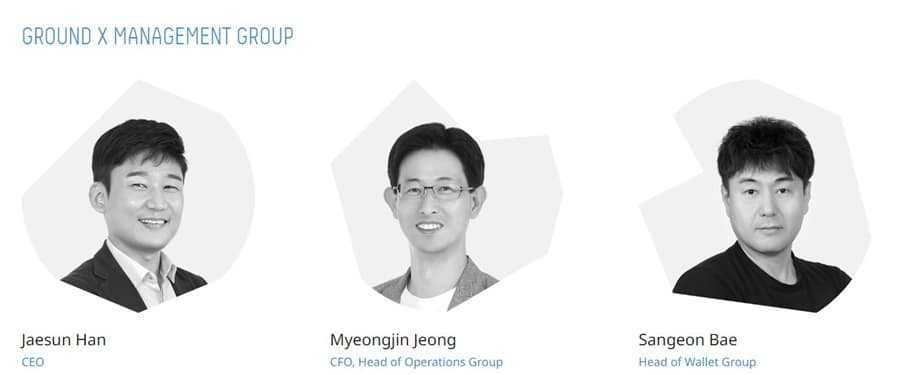
Sangmin Seo – Sangmin is Head of the Platform Group at GroundX and he is charged with developing a next-generation blockchain platform focusing on high-performance, scalability, and service-friendliness. Prior to joining Ground X, he worked as an assistant computer scientist at Argonne National Laboratory and as a senior engineer at Samsung Research.
He received his Ph.D in electrical engineering and computer science from Seoul National University, and has published numerous papers on parallel programming and high- performance computing.
Sangeon Bae – Sangeon is the Head of the Wallet Group. He joined Ground X with a variety of software development and project management experience from industry-leading companies. These experiences include time as a CAD developer at Samsung, a program manager in both Software Laboratory at Microsoft Korea and Visual Studio team at the Microsoft Headquarter in Redmond, WA.
He was also a project manager at Naver, and a producer and team manager at both Blizzard Korea and at the Headquarters in Irvine, CA. Through these roles he has built deep and wide range of software development management experience. Sangeon received an M.S. in computer science at Yonsei University.
Klaytn Governance Council
The Klaytn Governance Council is responsible for operating the Consensus Node Network, and for promoting growth in the overall ecosystem. The council is made up of an alliance of multinational organizations and businesses.
The Governance Council was designed and created with the belief that contributors who help to build, run, maintain, and grow the platform are going to have their interests most aligned with the platform, and will provide the best long-term governance and growth.
The initial Council was composed of 19 participants from some of the largest conglomerates in Asia. That number has grown to 30 members, and their participation in the Klaytn Governance Council extensively impacts their hundreds of affiliates and partners to explore ways of implementing Klaytn’s technology and network, thus promoting network growth.
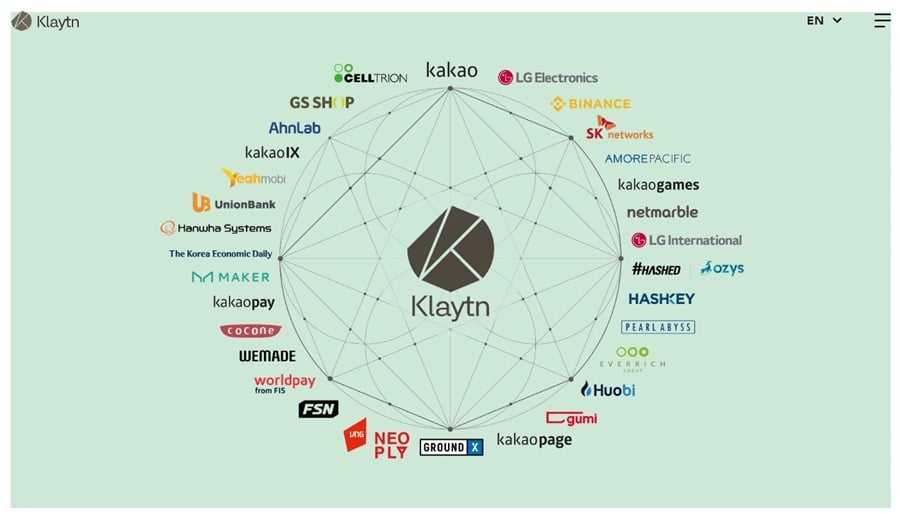
Because the Council undertakes an ownership responsibility in the Klaytn platform they are also helping to work towards the development of blockchain services on Klaytn, and accelerating user acquisition efforts to broaden the adoption and audience of Klaytn powered blockchain services.
The Governance Council takes on the following roles and responsibilities:
Governance
The Council members provide governance for the platform and make decisions regarding the basic structure of the platform, and new major features to be added. They also rule on updates to the economic policy of the network including funding structure, transaction fee policy, and contribution evaluation metrics.
Ecosystem Growth
One of the key responsibilities of the Governance Council is to provide a stable foundation for the Klaytn ecosystem. To promote this they work to remove any bApp adoption hurdles, and they empower the service providers to create bApps which have usability, responsiveness and robustness that is on par with legacy technology.
Core Cell Operation
The Consensus Node Network is operated by the Council members, making them an essential part of the Klaytn ecosystem and the network infrastructure. They will also step in to rule on meta-governance issues for platform-wide rules like banning bankrolled elections, or in the rare case an emergency action is needed (such as freezing the account of a known hacker).
Klaytn Improvement Reserve
Because the team behind the development of Klaytn is well aware that technology improves rapidly, and the needs of users also change and evolve over time they have added a mechanism to help Klaytn adapt and keep up with any such changes.
This takes the form of the Klaytn Improvement Reserve (KIR), which is managed on the platform in order to provide investment funds for research and development well into the future. The KIR can not only be used to fund research and development, it can also be used to fund projects that contribute to the growth of the Klaytn ecosystem.
Proposals can be created by any Klaytn ecosystem participant and then follow the Klaytn Improvement Reserve Review Process.
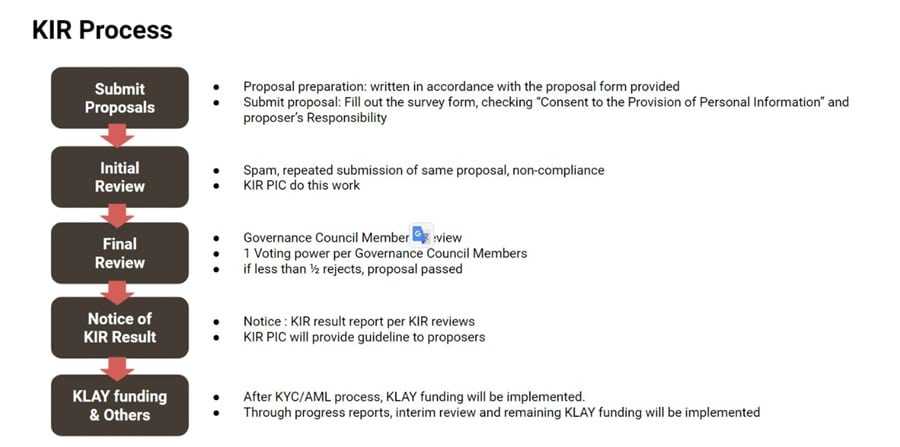
If a proposal is passed by the Governance Council the KLAY is distributed periodically from the total amount approved. These distributins will be based on the level of progress being made by the project. This process is subject to change based on the size of the project and allotment, but should be processed on a monthly basis regardless.
The KLAY Token
The KLAY token is the native cryptocurrency used in the Klaytn ecosystem. It is used for transaction fees when creating and executing smart contracts on the blockchain, or when making transfers of KLAY.
KLAY is included in the ecosystem because it is a necessary element for operating the Klaytn platform. Think of it as the fuel that powers everything. Besides being used to pay for transactions it is also the payment asset used to compensate the Consensus Node operators. KLAY ensures that develppers write high-quality code, since wasteful code costs more to run on the network, and it also ensures that the network remains healthy by compensating Consensus Nodes for contributing to the network.
Klaytn’s funding structure runs continuously with Klaytn network’s block generation. With every new block, newly issued KLAY and the sum of transaction fees used in the block (collectively called “block reward”) are aggregated and distributed to the following three destination accounts in accordance to the predetermined ratio:
- Klaytn Governance Council Reward: 34%
- Proof of Contribution (PoC) Rewards: 54%
- Klaytn Improvement Reserve (KIR): 12%
Currently 9.6 KLAY are minted per block. This implies roughly 300 million KLAY are minted annually, which is equivalent to 3% annual inflation against the 10 billion KLAY that were issued at genesis.
Klaytn never held an ICO for the KLAY token, however there were two private seed rounds conducted. The first was in December 2018 and sold tokens at $0.03 each and the second was in April 2019 and sold tokens for $0.08 each. As you can see from the chart below that’s turned into a very profitable investment for those early private investors.
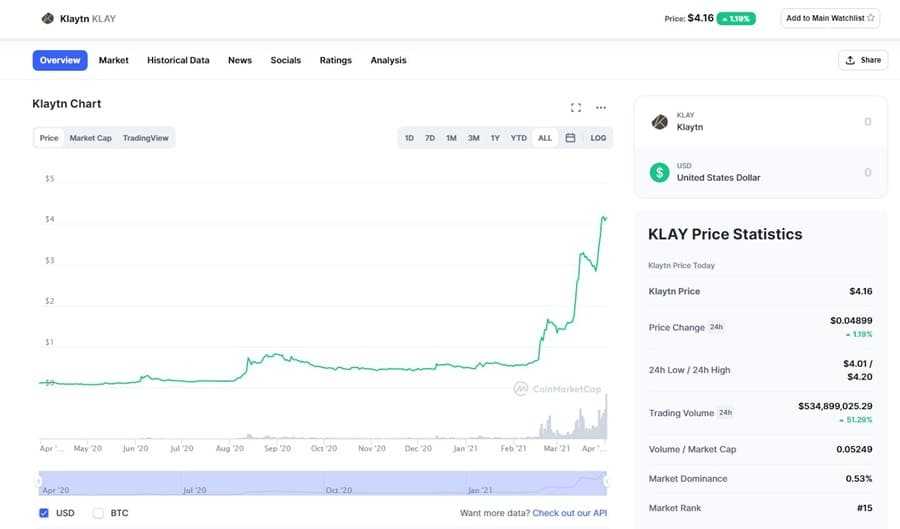
The KLAY token was already doing quite well compared with the private sale price as 2021 opened up, with the token sitting around $0.50. It crept slowly higher in January and then began to pump seriously in February. That’s continued in three waves since and as of April 1, 2021 the KLAY token is trading at $4.13 and is just slightly off its all-time high of $4.36 set on March 30, 2021.
Conclusion
Klaytn has been aggressively growing its network, adding new functions and features at a regular pace on a blockchain network that’s both fast and scalable. With applications ranging from games to DeFi to NFTs Klaytn really is living up to its promise of making blockchain bApps accessible to millions of people worldwide. Once they begin using the blockchain new users will find that the Klaytn platform’s efficient and hybrid design combines the best of both public and private blockchains.
One concern would be for investors in the KLAY token. With gains of nearly 1,000% in just two months it’s possible that KLAY is overbought at current levels and could be due for a correction. On the other hand, as the platform continues to find increased traction not only in Asia, but globally, there could be far more upside for the token.
Considering Klaytn has been on its main net since June 2019 it’s surprising we haven’t heard more about the project. With the platform’s token jumping into 15th place on Coinmarketcap it’s likely that we will hear much more in the coming weeks and months.
Klaytn seems to be on the brink of joining the major projects everyone knows immediately, and that could create massive growth and test the project’s claim that they are able to deliver bApps without increased latency even when network congestion grows massively.
Disclaimer: These are the writer’s opinions and should not be considered investment advice. Readers should do their own research.
